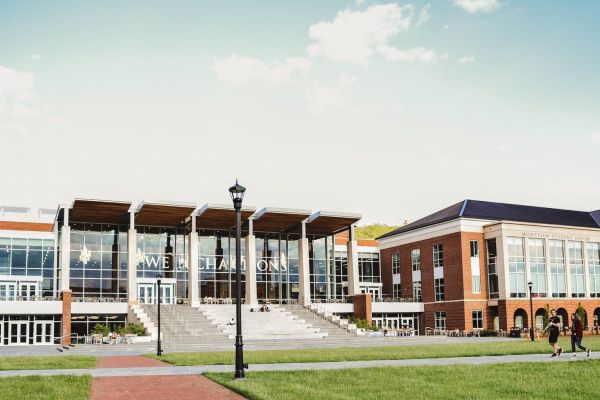Colleges Cannot Change
I do not believe that a typical American college can really change.
For a college to truly change, it inevitably needs to reconfigure its resources (its people, its assets, its time) in substantial, internally unpopular, and permanent ways.
Doing that — really shaking things up, let’s say — is not an option in most incumbent US colleges which are weighed down in fixed costs, vulnerable to even small changes to short-term revenue, and paralyzed by bureaucratic governance. Most US colleges can muster only bite-size, incremental change and are blocked from pursuing the transformative, new designs that we urgently need — the ones that might deliver break-throughs in cost and quality.
If I am right — if most US colleges are stuck in their ways — then two public policy implications follow:
- First, we should lower our expectations about a big swath of prevailing public policy in higher education which presumes a capacity for change in current colleges.
- Second, we should favor public policy that enables the formation of new colleges — entrepreneurial, nonprofit, and tightly regulated ones — that, unlike existing colleges, can truly innovate.
That Colleges Cannot Change
I believe that most US colleges are blocked from true change and innovation for three reasons.
- Mired in Fixed Costs. Colleges are typically bogged down in real estate and in entrenched salary obligations to staff who are variously tenured, unionized, and protected by civil service regulations. Turning over staff, selling real estate, and significantly redeploying resources – all of which need be options for an innovative college seeking a faster, better, and cheaper model – are not feasible in most current colleges.
- Dependent on Short-term Revenue. With few exceptions, US colleges have small cash reserves and live payroll-to-payroll on their tuition collections and public funding. As a result, colleges are usually precluded from investing in the one-time losses that invariably accompany innovation and new product design. They simply cannot foot any new bills. Moreover, they are wary of new models that might cannibalize their existing, high-priced offerings and interfere with their crucial, short-term cash flow.
- Paralyzed by Governance. A typical American college is leaderless. Nobody is noticeably in charge. Authority is distributed across faculty (mainly the tenured variety), the institution’s formal leaders (a president and a cadre of deans, usually), and one or several boards of trustees. Governance is sort of everywhere and nowhere on a good day. On a bad day, authority is fractured and contentious. Whatever the case – whether bureaucratically spread around or openly acrimonious — the governance model of a typical American college is geared for stasis and hostile to unpopular decisions, risk-taking, or decisiveness – all hallmarks of organizational transformation and true innovation.
Basically, most U.S. colleges are immobilized. They are neck-deep in fixed costs, wedded to short-term revenue models, and hamstrung by bureaucratic governance. They will keep doing what they are doing, more or less.
Public Policy Often Mistakenly Assumes that Colleges can Change
That current colleges are stuck in their ways is often overlooked by policy makers in higher education.
Policy makers — particularly the ones who trumpet new funding and stricter accountability for colleges — often over-estimate the ability of colleges (once better funded and once subject to more oversight) to correct themselves.
- Limits of Accountability Policy. Holding colleges accountable for outcomes, in particular their graduation and job-placement rates, is a good idea. State and federal agencies should do more of this. So should accreditors. Doing so will shine a light on struggling colleges, might press some colleges into marginal change, and will arm students and families with more and better data. All of this is good, and I am for improved accountability in higher education.
But holding colleges more strictly and openly accountable for their results has limits, profound limits. It will not heighten the capacity of colleges to change. Tightening oversight over colleges does not alter the fixed cost structure, economic fragility, or paralyzing governance model that preclude typical colleges from transformation. Accountability will appropriately point out the problems of colleges, but it will not increase the capacity of colleges to fix those problems.
- Limits of Subsidy Policy. Further subsidizing colleges, especially community colleges, has dominated the news and policy cycle for the last six months. Lots can be said on this topic. I will limit myself here to the observation that increasing funding for colleges — even when that funding is tied, as it always should be, to outcome improvements by recipient colleges — will not address the structural hurdles that colleges face when pondering change. In many cases, more funding for colleges will mainly enable colleges to carry on, as they are.
The Case for Entrepreneurial Nonprofit College Startups
Our college sector needs innovation urgently – innovation that uncovers, refines, and perfects college models far less expensive to families and our governments and far more successful at graduating students and qualifying them for good jobs.
To me, the most plausible way to trigger true innovation in U.S. higher education is to create a pathway into the sector for a new crop of nonprofit entrepreneurs who — free from the fixed costs, fixed models, and fixed governance of incumbent colleges – can take a fresh run at designing college.
Clearing a tightly monitored path into higher education for a new breed of nonprofit college startups is the main policy goal of the Postsecondary Commission. It will require political will, patient advocacy work and, in particular, new approaches to accreditation (since our current accreditation regime effectively blocks new college formation).
In the weeks and months ahead, I will blog about the merits and practicalities of new nonprofit colleges, so needed — per above — because most existing colleges are inhibited from innovation.
More to come soon.

